Can you change your signature? Everything you need to know
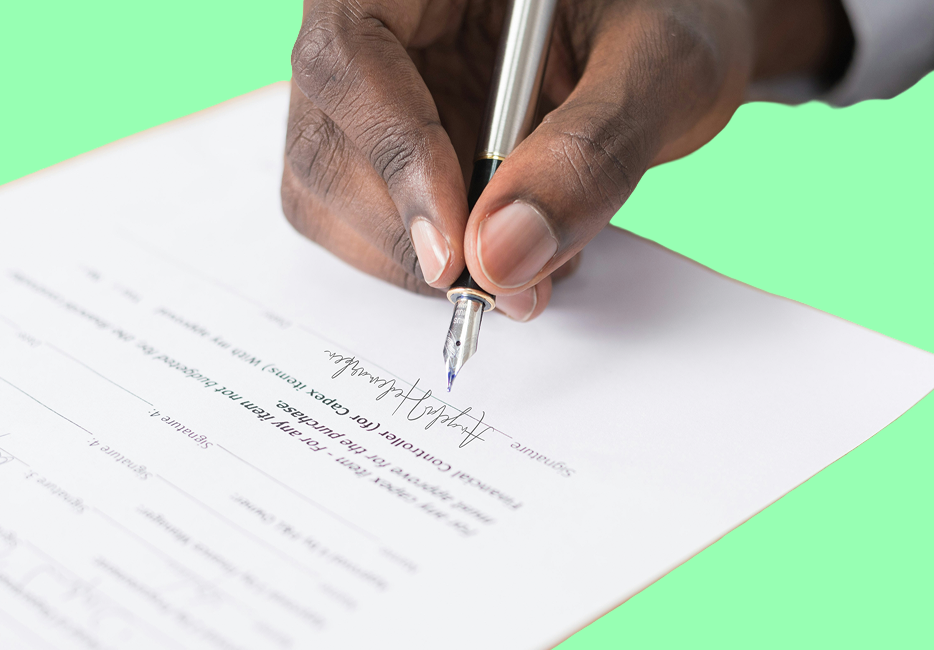
Introduction to changing your signature
Life is full of changes, bringing moments like marriage, personal rebranding and privacy concerns a call for adjustments. But what happens when our name or identity changes? Can we actually change our signatures too?
Why are signatures important?
A common definition of a signature is:
“Your name written by yourself, always in the same way, usually to show that something has been written or agreed by you”.
Signatures play a significant role in identifying who you are. It’s a unique mark that’s used as an authentication tool to verify your identity. Signatures are also important in situations where you confirm your consent to an agreement. They validate legal documents such as contracts and signing it shows that you understand the agreement and works as proof of your consent.
What counts as a signature?
Basically you can choose whatever signature you like. It can be your name, your initials, a symbol or even a drawing. Historically people have been taught to use their name when signing documents, however there are no specific legal requirements that define what counts as a signature. As long as it’s used consistently as part of your identity and clearly indicates that you are the person who signed the contract with the intention to do so.
Today a signature can be both handwritten or digitally generated. Electronic signatures are often created using a digital pen, a typed name or a scanned version of a handwritten signature.
So, can you actually change your signature?
The simple answer is yes, you can change your signature whenever you want to. In most countries there are no legal laws or processes you have to go through to change your signature. You can essentially just start using a new one.
What are the reasons for changing a signature?
There are a few different reasons to why people change their signature. Here are some of the most common ones.
- Name change: People sometimes choose to change their name which may also require updating their signatures. A common example is marriage where one or both partners change their surname. As part of this change they may need or want to update their signatures. In contrast, divorce can be another situation where one or both reclaim their maiden names and therefore want to change their signature.
- Professional reasons: Another reason to change a signature is to reflect a professional identity, such as doctors including their professional title or artists adding a personal creative element.
- Security concerns: Your signature might be too simple or easily forged and therefore choose to change the style to a more complex one.
- Practical reasons: Some may change their signatures to make it more legible, faster to write or to replace an old one created when they were younger.
But before changing your signature there’re some practical considerations to keep in mind.
What should you consider before changing your signature?
Changing your signature may involve some practical aspects that’s important to be aware of. It can be a good idea to update your official document so they match your new signature. There’re no legal requirements stating that they must be the same but if you’re planning to create a new signature it might be smart to do so when renewing document such as your passport, ID or driver’s licens.
If your new signature is drastically different you might be asked to provide extra ID or certification when it comes to legal documents. It’s rare but it might happen. For safety reasons it can therefore be advisable to inform relevant authorities of your updated signature to confirm your identity, particularly on ongoing contracts or agreements.
Once you change your signature it’s best to stick with the new one, as using multiple signature at the same time can cause confusion. Especially on important documents or contracts where a mix of signatures can make others raise red flags or slow down approvals.
What should you think of when creating a new signature?
If you thinking about changing your signature, don’t stress it. Here are some things to consider when creating a new signature.
- Consistency: Whatever signature you choose it’s important to use it consistently in the future and avoid mixing different ones.
- Legible or illegible: There’re no specific rules about how the signature should look but it’s a good idea to consider how you’ll feel seeing it on contracts or other formal documents.
- Practice: Try writing your new signature on paper multiple times until you find one that feels natural. It can also be helpful to practice your signature on both documents and digital pads to see which one works best for you.
- Speed: If you usually sign many contract there could be a good thing to create a signature style that allows you write it quickly.
- Discover what suits you best: Thoroughly consider which new signature you want to adopt by experimenting with different styles and finding one that feels right for you.
- Legal validity: A signature is legally binding whether it matches your name or not, as long as it can be proven that you were the one who signed it.
How to create a signature with SimpleSign
Since 2000, when electronic signatures became legally binding they’re used all more often for everything from approving contracts, hiring new employees to closing deals. SimpleSign is a contract management platform that offers a modern eSignature solution which gives you the possibility to elevate your signing processes and efficient your work.
With SimpleSign, you can easily create a signature in three different ways.
1. Draw it
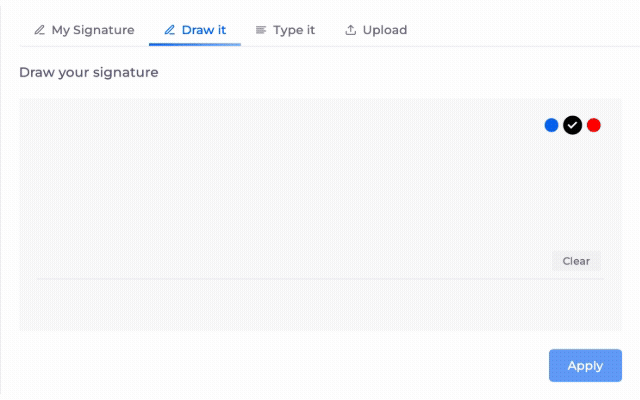
2. Type it
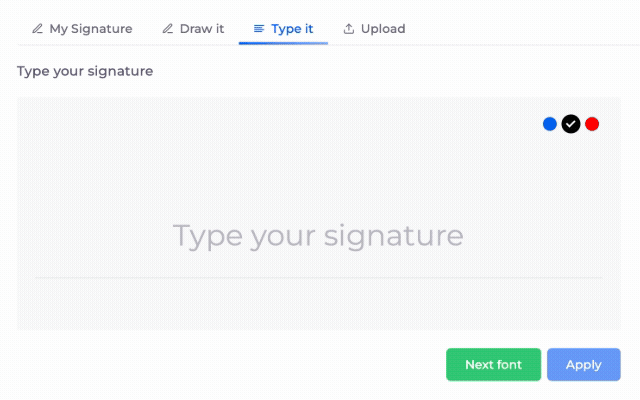
3. Upload it
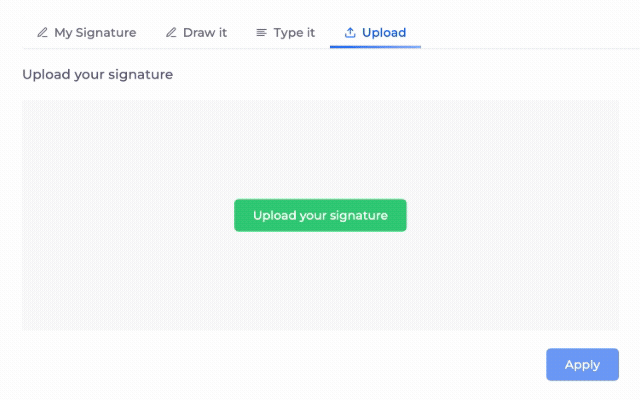
When you have created your signature it will appear below “My Signature”.
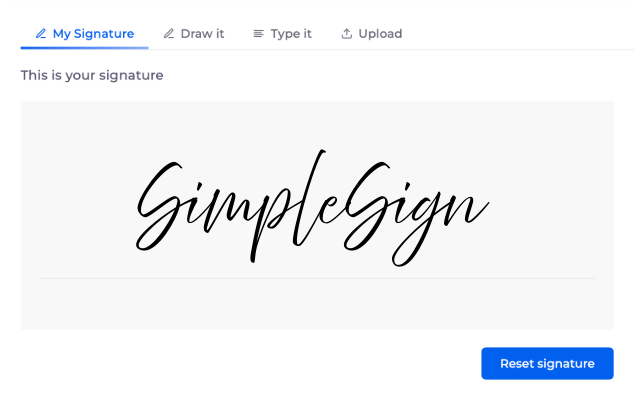
How to change a signature in SimpleSign
You can change your signature just as easily as creating it. Click on your profile in the upper right corner, your will se your current signature there. Then select “Change your signature”, the same page you used to create your first signature will appear. Press “Reset signature” and follow the same steps as before to create a new one.
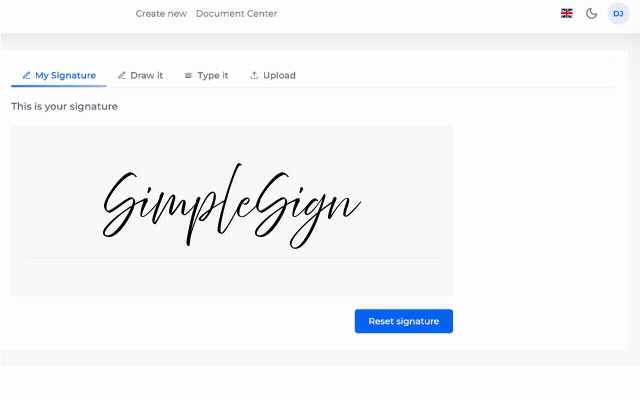
Benefits of using SimpleSign’s eSignatures
By using SimpleSign you can significantly speed up the document signing process and save valuable time by reducing manuals tasks. The platform eliminate the need for things such as printing, paper and storage, cutting both time and costs. With SimpleSign you can securely sign contracts within minutes, anytime and anywhere you are, ensuring a faster, more efficient and fully digital workflow.
Final thoughts: Can you change your signature?
You can change your signature to whatever you like, at any time. The key is to use it consistently as part of your identity so that it can be verified and serve as proof of your consent. However, as with any change, there’re some important aspects to be aware of during the change of signature to ensure the process remains smoothly and secure.
Today are digital signatures all more often used and a perfect tool to efficient your businesses. If your company wants to create e-signatures to speed up your workflow by signing your contracts digitally you should try SimpleSign’s contract management solution.
